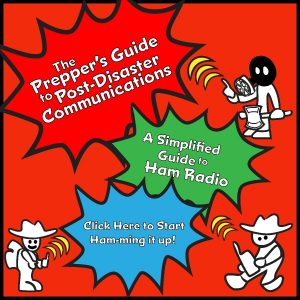If you're new here, you may want to subscribe to my RSS feed. Thanks for visiting!
Author of How to Prep When You’re Broke and Bloom Where You’re Planted online course
A while back, I started a series on the Great Depression adage, “Use it up, wear it out, make it do, or do without.” We’ve already talked about using it up. Today, let’s talk about ways to wear it out.
Before I began traveling full-time and limiting my wardrobe to just what would fit in 2 suitcases, I had never really experienced wearing things out. But using the exact same items on a daily or weekly basis put wear and tear on them that I wasn’t accustomed to seeing. I had been spoiled in the Land of Plenty with weeks’ worth of socks and underwear, half a dozen (or more) pairs to choose from, and the ability to just go into the store and buy more of anything that was beginning to look ragged or threadbare.
This taught me some important frugality lessons about wearing stuff out. I had never before worn sneakers until they had holes in the toes and soles. I had never blown through nearly every sock I owned.
1) Buy better quality
First, whenever you can, purchase items of high quality. As financial difficulties increase and the supply chain continues to unravel at a head-spinning speed, you may find that replacing a low-quality item isn’t as easy as it once was. You, too, will witness the difference between a phone cord from the dollar store and a phone cord from a name brand at an electronics store.
In some cases the initial outlay of more money will prove to be by far the most budget-friendly choice. After all, poking your big toe through a pair of cheap socks the third time you wear them isn’t just as annoying as all get out. It adds up if you have to replace your socks on a monthly basis. While socks and other things can be mended, when you start out with low-quality materials, the repairs do not hold for very long.
If you can afford it, go with better quality options and it will take much longer to wear it out.
2) Maintain it
Whatever quality of time you choose to buy, or whatever you have on hand, the way you maintain it can make a bit difference in how soon you wear it out.
For example, most ladies are well aware that putting a bra in the dryer is a no-no, particularly if it has underwire and shape. Your bras will last far longer if you hang them to dry. The same is true for sweaters or any material that is prone to pill, although many of those items should be laid flat to dry.
It goes further than clothing. Maintaining your vehicle costs extra money at the time but will help to prevent far more expensive repairs and towing bills when it breaks down due to lack of maintenance. Washing off the road or ocean salt can help prevent rust and corrosion on your vehicle.
By cleaning out the gutters on your home a couple of times per year, you avoid the risk of them getting filled with leaves and debris, and potentially causing a leak. By maintaining your yard regularly, you reduce the wear and tear on your lawnmower. Immediately drying something that is prone to rust prevents oxidation.
You get the idea – taking care of your things simply makes them last longer.
3) Mend it
A lot of things that seem to be completely worn out can benefit by mending. This particularly relates to clothing and footwear.
A sock with small holes can be salvaged if you know how to darn. I have a basket of such socks beside my sofa and mend socks or other items while I relax and watch movies in the evening. Sewing on a button, fixing a ripped seam, patching a hole, or repairing a hem can make your clothing last longer.
One of the best inventions ever is Shoe Goo. It’s a strong adhesive to put your footwear back together again. It works on leather, rubber, fake leather, and canvas. When it dries, it’s waterproof. I have mended many a snowboot and sneaker using this stuff.
As far as clothing and footwear are concerned, you can make it a lot further before wearing it out if you mend issues while they are still small.
4) Repair it
When I suggest that you repair things, I’m not telling you to go rebuild the top end of your engine. (Unless you know how to do that, in which case, it’s cool.) But there are many other things that can be repaired to put off product-doomsday for at least a little while longer.
Electrical tape can be used to safely repair the cord on an old lamp, although great care must be taken to not turn it into a fire hazard. (Which is of course the exact opposite of making things last.) Many things that people opt to throw out could have been repaired with a little bit of elbow grease and know-how. I have used the book How to Fix Damn Near Anything for decades to…well…fix damn near everything. I’ve replaced a heating element in an electric stove. I’ve disassembled a drain and removed an obstruction. (And better yet, reassembled it correctly.) I have breathed at least temporary new life into a refrigerator on its last legs. Did you know that a bread tag and a hot glue gun can be used to “weld” a broken plastic laundry hamper?
I strongly recommend that book and at least a basic set of tools. Between this and YouTube, you may be surprised at the things you’re able to repair yourself instead of replacing or calling in a professional.
5) Live with it
Sometimes, you can’t mend it or repair it but that doesn’t mean you can’t still use it. I had an old rainwater collection urn on a former patio that had a tiny little hole in the bottom. I put a quarter over the hole and used a ladle to get the water out for my plants.
We had a door with a broken upper hinge. If you pushed the top of the door with your shoulder in toward the doorjamb, the hinge would stay in place. If you didn’t, the door fell off the hinge. Was it ideal? Of course not. Was it usable? Yes, for quite some time.
I’ve probably mentioned our 25-year-old Vitamix blender that is missing a leg. Any time we moved, when we unpacked the kitchen, someone had to finish a 600 mL bottle of soda pop because the lid was the exact height needed to put in place of that missing leg.
In Mexico, a sight I saw frequently was children from families with little money wearing some unusual footwear. Their moms’ had cut the toes off their sneakers. This turned them into “sandals” to get a summer’s worth of wear out of the too-small shoes.
Do you have a cracked container that was designed to hold water? Repurpose it and use it for something that doesn’t require such solidity. I have made planters out of leaky water pitchers and grown some lovely herbs from seed in them.
Sometimes wearing it out just means using an item well past the point at which other people would have given up on it.
6) Use it until it’s unusable.
At some sad point, there comes a time when an item is well and truly worn out and no longer of use. But wait…
- Old clothing can be cut up and made into cleaning rags, with the good fabric saved for other purposes.
- A tire that’s unsafe to drive on might work as a planter or a swing.
- A holey sweater might be able to be unraveled and the yarn used for other purposes.
- Used pantyhose can stuff a pillow.
- A rusty, unsalvageable muffin tin can be a drawer organizer
- Old drawers from a broken dresser can be fitted with wheels and used for underbed storage
- Pencil erasers make great earring backs
You get the idea. Think far outside the original purpose of the item. Get just a little more use from it before you truly deem it “worn out.”
How do YOU wear it out?
How do you get every bit of use possible from an item? What are some creative ways you’ve gotten a little more wear from something that others would have considered worn out? And then…how did you repurpose what was left to get even more use from it and really wear it out?
Share your thrifty thoughts in the comments.















